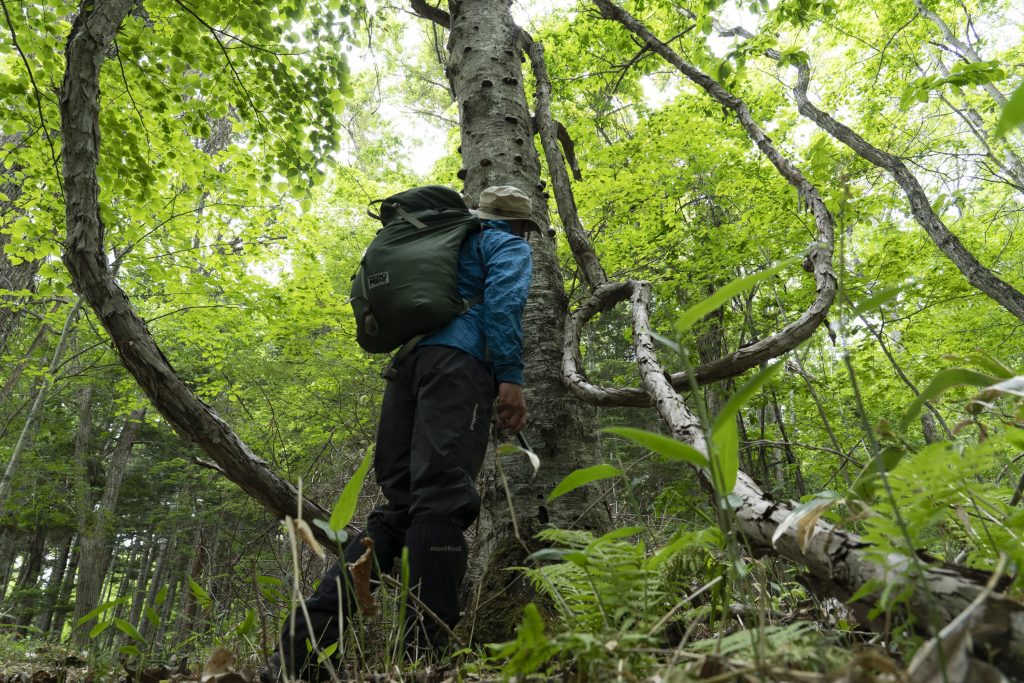
NIBUSHI PENINSULA
Nibushi Peninsula
The Mashu Kussharo Trail (MKT) leads around the Nibushi Peninsula through a forest of towering Sakhalin fir and katsura trees, and along a stretch of the sandy eastern shoreline of Lake Kussharo.
Sakhalin fir and the cold
Sakhalin fir is the main conifer species on the peninsula. This hardy tree is able to withstand extreme cold. However, in the depths of winter, when the temperature drops to around -30° Celsius, tree trunks may crack because of the cold. Some of the Sakhalin fir trees on the Nibushi Peninsula bear these long vertical cracks. In the local Ainu language the peninsula is called nipusi, meaning “jumping trees,” a name possibly inspired by the loud cracking sound the trunks make when they split.


Trees and Ainu resources
Broadleaf species on the peninsula include Manchurian elm, Mongolian Oak, Japanese linden, and several species of maple. Ainu living in the area used these and many other plant species for sustenance and to make tools and necessities. Katsura trees were felled, and their trunks used to make dugout boats for transport and trade; the bark of the Manchurian elm was softened and worked to make thread for weaving durable outer garments, and the ripe fruit of the crimson glory vine was harvested in the fall for food.


Habitat for wildlife
Birds, Japanese deer, Siberian flying squirrels, and other local wildlife inhabit the peninsula. Tree trunks bear the signs of the black woodpecker, a crow-sized bird that chisels deep, elongated holes into the tree trunks as it forages. Ainu revere the bird as a spirit-deity or kamuy, calling it ciptacikap, which means “boat carving bird.” According to legend, the ciptacikap was the inspiration for making the dugout boats Ainu people traditionally used.


Lake views
Most of the trail around the peninsula is through forest, but from the western edge of the peninsula the trail offers panoramic views of Lake Kussharo in the direction of Nakajima (“central island”) and Bihoro Pass.
